Nicholas Mangan A World Undone
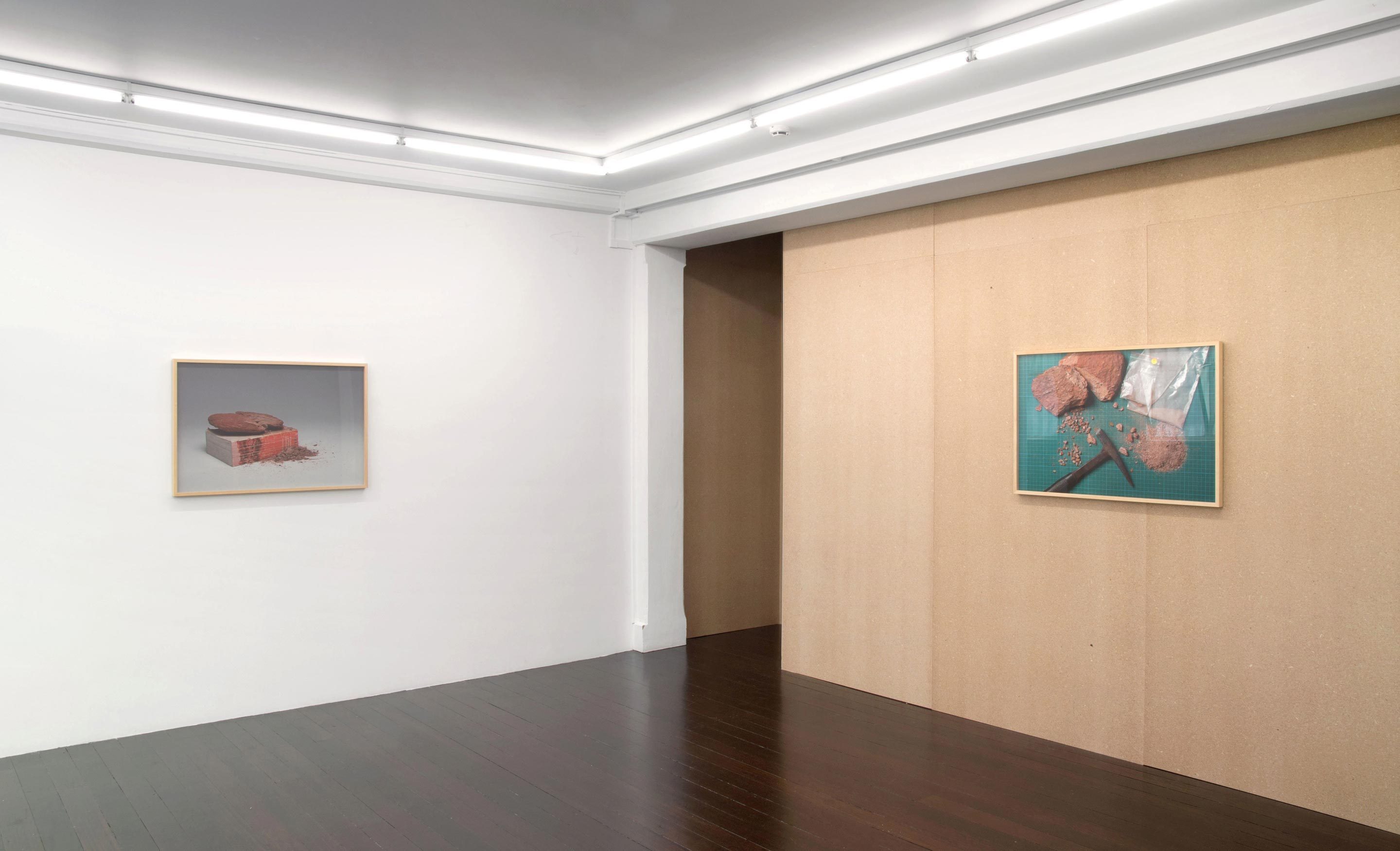
Nicholas Mangan
A World Undone, 2012
installation view: Hopkinson Cundy, Auckland
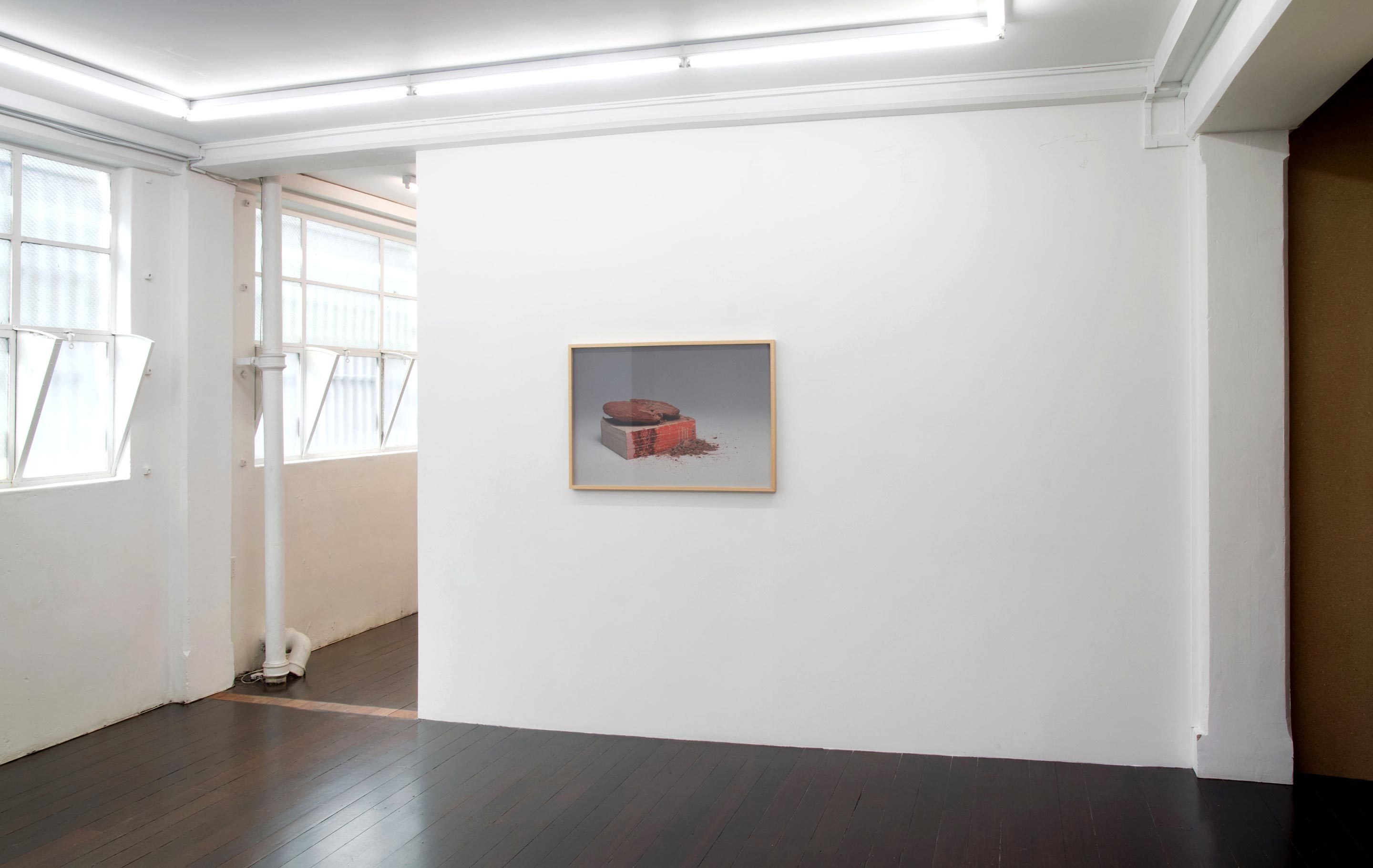
Nicholas Mangan
A World Undone, 2012
installation view: Hopkinson Cundy, Auckland
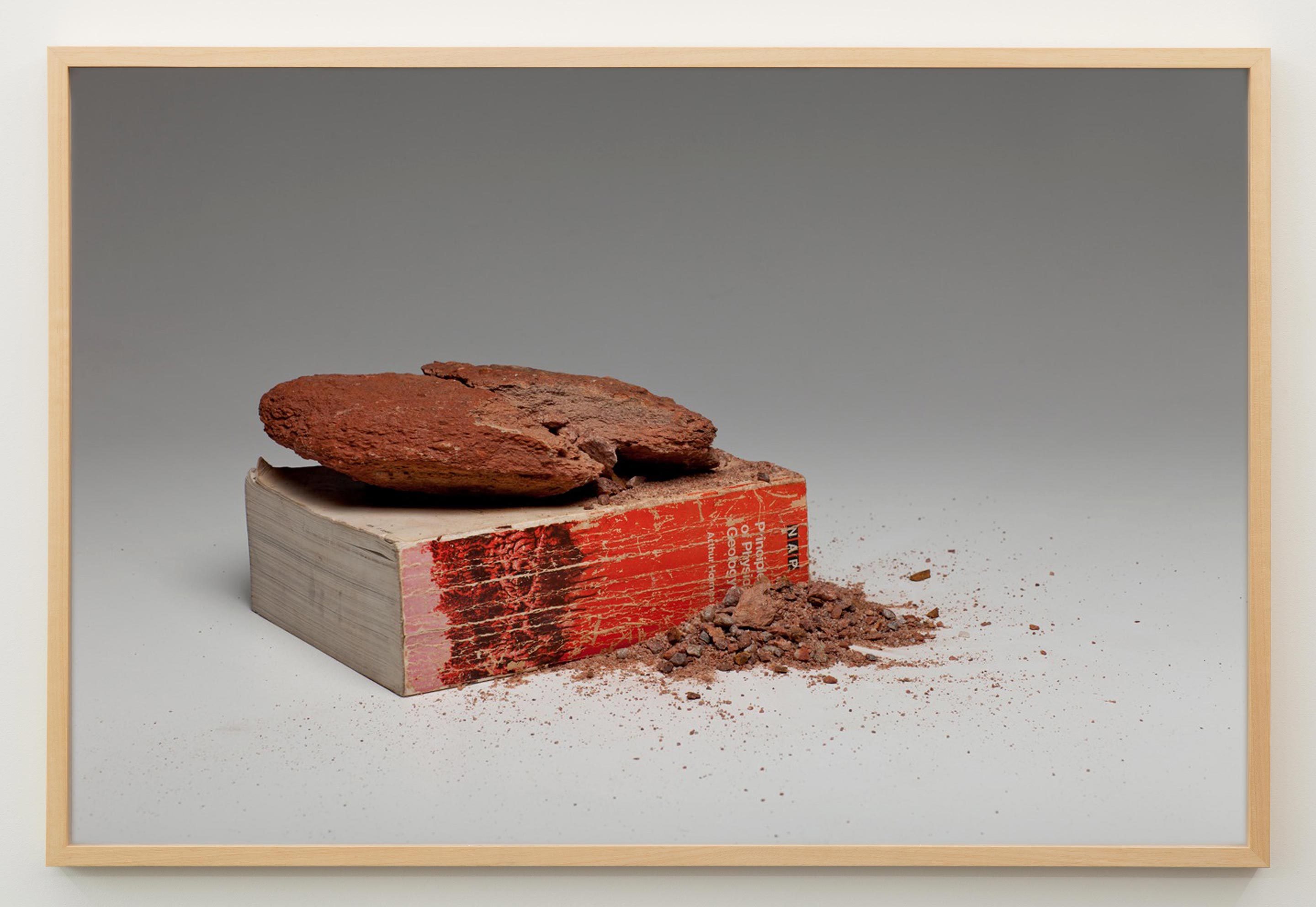
Nicholas Mangan
Matter over mined, 2012
C-print on cotton paper
690 x 1030mm

Nicholas Mangan
Matter over mined (for A World Undone), 2012
C-print on cotton paper
690 x 1030mm
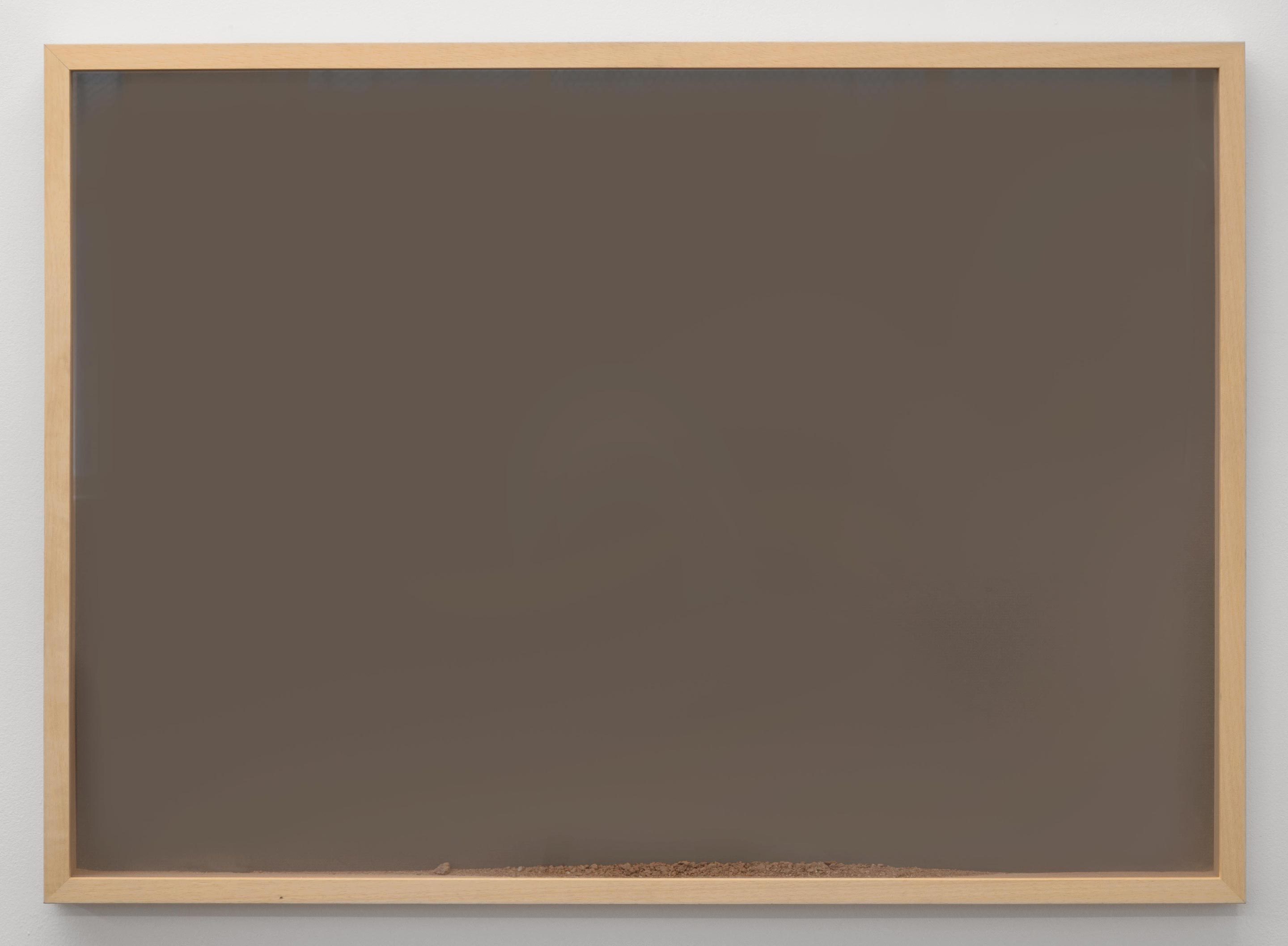
Nicholas Mangan
Untitled, 2012
geological material in custom frame
570 x 800mm
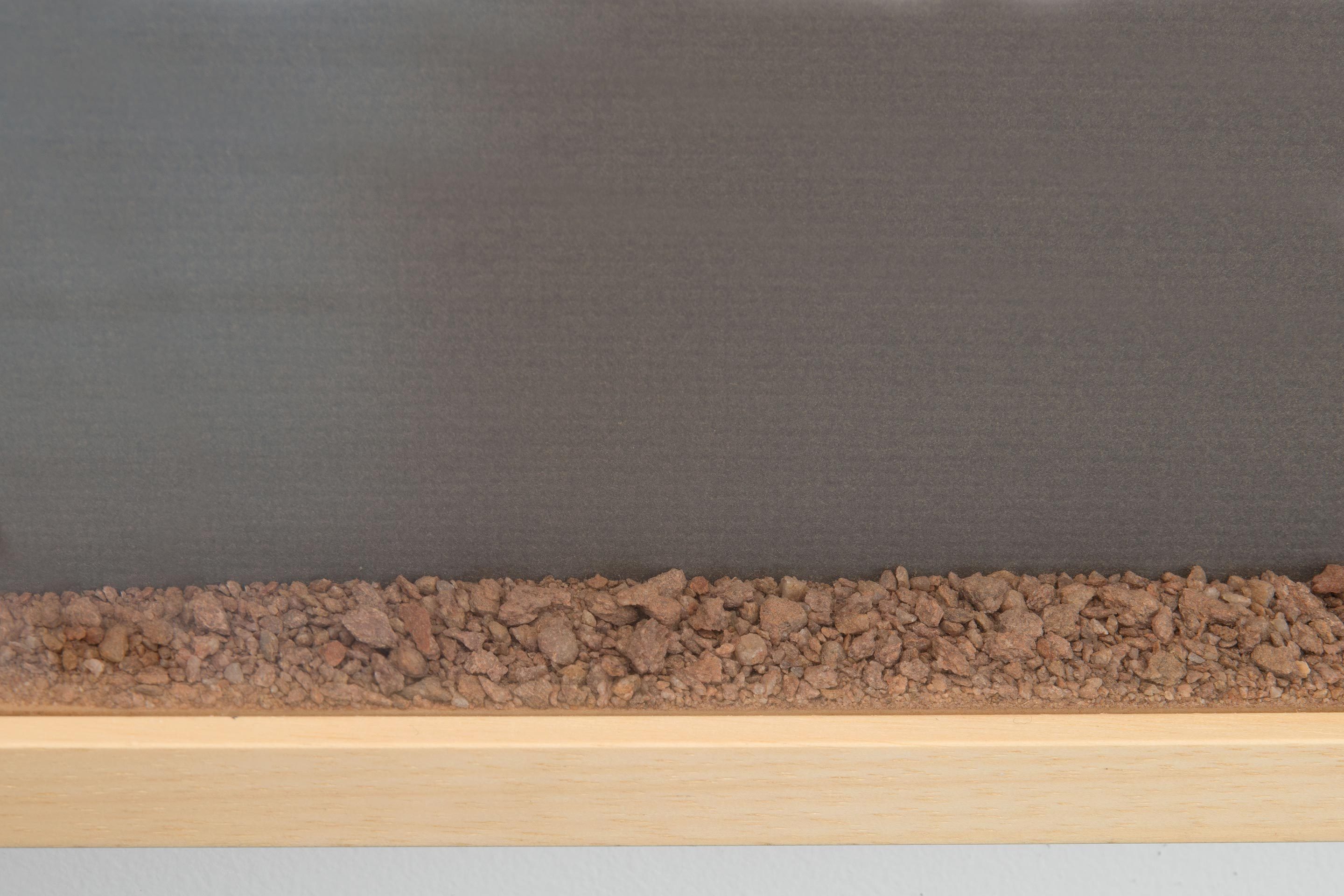
Nicholas Mangan
Untitled (detail), 2012
geological material in custom frame
570 x 800mm

Nicholas Mangan
A World Undone, 2012
HD film (colour, silent)
duration 12 min loop

Nicholas Mangan
A World Undone (still), 2012
HD film (colour, silent)
duration 12 min loop
Nicholas Mangan
A World Undone
19 Oct – 17 Nov 2012
Auckland
Hopkinson Cundy is pleased to present A World Undone, a new solo exhibition by Nicholas Mangan.
In this exhibition Nicholas Mangan’s sculptural practice extends into film and photography. Aptly described as a “material storyteller”, Mangan draws from both recent history and deep time to tease out narratives of the rise and fall of civilizations – of ambition, construction, rupture and decay – and in an unquestionably concrete language.
For A World Undone Mangan looks to Jack Hills; a remote area of Western Australia that is home to some of the oldest geological material on earth. The zircon crystal found in the aggregated rock material at Jack Hills is said to be 4,404 million years old and to have formed around 150 million years after the planet came into being. Following the discovery of the zircons in 2003, Jack Hills has become the subject of conflicting interests between conservation and commercial interests as iron ore mining in the surrounding area encroaches on the historically significant site.
For Mangan, Jack Hills functions as both physical and allegorical site. Using physical traces of primordial elements Mangan tests our understanding of the material world, civilization and time, while the specific story of Jack Hills spins out to wider debates about mining and resource use in Australia and globally. As Helen Hughes proposes in her essay that accompanies Mangan’s exhibition: “The twinned, vertical activities of archaeology and mining here present themselves to be apposite sister methodologies for examining the way geological time is perforated by the concerns of the contemporary, literally: by the demands of the commercial mining and knowledge industries alike.”
The central work in A World Undone is an eponymous film that captures crushed geological matter from Jack Hills in airborne flux. Shot in slow motion, the film resembles documentary imagery of meteorite showers, cosmic dust or an asteroid belt. Here the dust is documented in a fleeting and unstable form; the earth’s crust – its most primitive, foundational matter – is imagined in a state of dematerialization. While Mangan’s previous works have used filmic devices to amplify otherwise static sculptural objects, in A World Undone the film is a sculpture of dust in flux. Mangan uses the film medium’s ability to protract time in order to examine the form of these dispersed primordial particles in detail.
The two colour photographs that complete A World Undone picture the geological material in various studio environments. In one photograph a hunk of crumbling rock sits atop a weighty volume of Principles of Physical Geology. In the other, pieces of Jack Hills rock are pictured on a graph mat with a hammer and specimen bags. As with the film, Mangan’s photographs suggest measures of change within the earth’s crust, but here the dust is shown clearly within the realm of human intervention. The book becomes a symbol of the tendency to quantify our existence through exploration of our physical environment, yet the imagery seems dated and the cover worn out. They are poignant and compelling reminders of the impact this constant motivation to sample, test, and examine the world around us, in order to better understand our place within it, may have in the future.
A World Undone is accompanied by a new essay by Melbourne-based writer Helen Hughes. The text will be available in hardcopy from the gallery, or online from the opening date.
Nicholas Mangan was born in Geelong in 1979, studied and now lives in Melbourne, Australia. Recent solo projects include: Some Kinds of Duration, Centre for Contemporary Photography, Melbourne; Nauru, Notes from a Creataceous World, Hopkinson Cundy, Auckland; Talk about the weather, Y3K, Melbourne; Comparative Material, Sutton Gallery, Melbourne; Between a rock and a hard place, Art Gallery of New South Wales, Sydney; A1 Southwest Stone, Gertrude Contemporary Art Spaces, Melbourne.
Mangan’s work has been included in various international group exhibitions such as: Sinking islands (curated by Vincent Normand), Labor, Mexico City; Talking Pictures, Artspace, Sydney; Lucky Number Seven, SITE International Biennial, Santa Fe, New Mexico; The Shadow Cabinet: the second phase of “Master Humphrey’s Clock”, de Appel Arts Centre, Amsterdam; Lost and Found: an archeology of the present, TarraWarra Biennial, Melbourne; and Uncanny Nature, Australian Centre for Contemporary Art (ACCA), Melbourne.
For further enquiries please contact the gallery directly.
VERTICAL HISTORIES:
Nicholas Mangan’s A World Undone
It is telling that the aerial photograph, taken by NASA of the Narryer Gneiss Terrane of the Yilgarn Craton (otherwise known as the Jack Hills region of Western Australia), that Nicholas Mangan has appropriated for his A World Undone project looks much like a microscopic photograph of human skin: striated with rivulets like capillaries, crevices like wrinkles. This is so because Mangan’s expanded sculptural practice, which encompasses film and photography, frequently brings into focus the formal, physical and philosophical relationship between the macro and the micro, the concept of long-time shot through with concerns of the contemporary. Mangan braids these opposing vantages together through a series of compositional devices that draw out formal resonances between different points on these vast scalar spectrums. In turn, these formal resonances typically couch a suite of more nuanced historical, scientific or political parallels, which the artist reconfigures in his work.
For A World Undone (2012), this constellation of points plots out a map detailing, in the artist’s words, ‘our relationship to the cosmos of materials we use and inhabit’ — namely mineral resources and the processes of their extraction from the land. The twinned, vertical activities of mining and archaeology here present themselves to be apposite methodologies for examining the way long- or geological time is perforated by the concerns of the contemporary, literally: by the demands of the commercial mining and knowledge industries alike. The physical gesture of digging downward through the sedimentary strata of the earth brings the distinct temporality of geological or long-time into stark juxtaposition with the contemporary — the human here and now of the digging. Through mining or archaeology, these opposing temporalities are revealed as conterminous on a new vertical axis. The mineral substance that is addressed by Mangan’s A World Undone project is possibly the oldest geological mineral formed on earth: 4,404 +/-8 million-year-old zircon crystal — part of the aggregated red rock material at Jack Hills (pictured in the NASA aerial photograph), which is thought to have been formed roughly 150 million years after the earth came into being. These crystals, in fact, are believed to be products of an ancient crust that developed on the surface of the earth in between ‘periods of intense meteor bombardment’; that is, they are thought to have partly comprised this planet’s first terrestrial skin.
Earlier in 2012, Mangan sourced a sample of this rock containing zircon crystal from Jack Hills which he then proceeded to crush into crumbs, and then granular dust. This process was carried out along the methodological lines of a disaggregation, or what Robert Smithson — an important precursor to Mangan’s thinking — famously spoke of in terms of entropy: the reversal or decline of discrete matter into a state of disorder. In the video work A World Undone, Mangan filmed these granular particles in airborne flux set against a black backdrop with a slow motion HD camera. In so doing, he both captured the dust particles’ movement with microscopic detail and dislocated this movement from earthly time by slowing down the footage — shooting 2,400 frames per second as opposed to the standard rate of 24. At this speed, the specks of dust become epic: moving slowly, silently, and with a hint of gravitational force through the blank, black space. With no clear context or scalar referents discernible within the frame, the footage of these drifting particles is reminiscent of ‘documentary images of meteorite showers, cosmic dust or an asteroid belt’; the polar relationship between the micro and the macro is cast into radical ambiguity.
In 1977, Charles and Ray Eames famously drew a pictorial arc between the macro and micro scale of things in the universe in their short documentary film Powers of Ten. This film is centred by a microscopic analysis of human skin on the back of a sleeping picnicker’s hand (incidentally echoing Mangan’s appropriation of the aerial imagery of the Jack Hills topography), which is juxtaposed with an extreme macroscopic perspective that zooms out to encompass the scope of the observable universe. In an article for Cabinet magazine in 2011, Mark Dorian spoke of the ‘uncanny feeling of symmetry’ conveyed by this film’s zooming voyage: from the macro vision of outer space to the microscopic analysis of the nucleus of a carbon atom in the man’s hand. Dorian refers to the images at either end of the Eameses’ scalar spectrum as being ‘visually consonant’ and, as such, ‘endow[ing] the film with a strange circularity, almost as if the poles of the vertical line along which we have passed were bent to meet one another’.
Something of this symmetry is also felt in A World Undone. By establishing a visual correlation between macro cosmic matter like asteroid belts and the micro-sized specks of disaggregated dust, A World Undone marries the earth’s becoming, emblematised by the invisible particles of zircon embedded in the red rock dust, with its unbecoming — what the artist has described as an ‘inverted cosmos’. Here, the earth’s first terrestrial crust has been smashed and filmed in a state of dematerialisation, and Mangan presents the two processes of becoming and unbecoming as formally poised so as to mirror one another. In this gesture, chronological progression is warped and replaced with a decidedly non-linear temporality, which functions to destabilise (or perhaps at least expand) human conceptions of scale and time. This shift towards an anti-correlationist treatment of scale is also what distinguishes the relationship set-up between the macro and micro in A World Undone from that sketched by the Eameses (here working for IBM) in Powers of Ten, the latter of which ultimately frames the ascent into deep outer space with a human scalar referent (the sleeping man’s hand) and the acousmatic voice of a human narrator (which is notably calm, male, scientific and American accented).
In the two photographic works of the A World Undone project, Mangan contrasts different modes of scalar quantification to further destabilise anthropocentric hierarchies of perception. Matter over mined (for a world undone) (2012) shows a small pick axe, a chunk of the red rock material from Jack Hills, and three small plastic zip-locked specimen bags containing samples of this crushed rock neatly assembled on a bright green, square-centimetre gridded mat. The pale blue lines of the grid are so perfectly aligned at right angles with the surface of the picture plane that they seem to echo the weave of a canvas and thus the medium-specificity of painting (its two-dimensionality), as Rosalind Krauss would argue. The heavy black shadows cast by the axe and the chunk of rock, and the crisp reflections caught in the puckered surfaces of the zip-lock bags, however, dramatically rupture the effect of two-dimensionality created by the grid. Here, two opposing modes of representation jostle for dominance, each working to undo the other. The same tension is established between methods of measurement. The zircon crystal embedded in the aggregated rock material pictured in Matter over mined (for a world undone) is an invaluable resource to scientists who, since its discovery in 2003, have been looking to it in order to ascertain the date of the initial cooling of the earth’s crust by analysing the rate of decay of isotopes in the zircon. This form of measurement that is, importantly, internal or immanent to the rock matter itself, is likewise thrown into violent relief by the backdrop of the grid corresponding to the standard metric system, itself synonymous with humanist rationalism — the Euclidean grid.
Matter over mind (2012), on the other hand, depicts the rock matter contrasted with a form of scholarly measurement — it is photographed sitting atop a copy of the British geologist and geochronologist Arthur Holmes’s 1944 book Principles of Physical Geology, which too is shown to be pervious to the weight of time with its spine striated with lines of wear at different stress points. The brute juxtaposition of geology and language here recalls Smithson’s 1966 drawing A Heap of Language, in which a litany of words pertaining to language itself (like ‘babel’, ‘terminology’, ‘letters’, ‘etymology’) are sketched as piled up into a mound against the backdrop of a hand-drawn metric grid. This form is likewise echoed in Mangan’s sculpture A World Undone (protolith) (2012) (not featured in this exhibition), in which the artist has dropped zircon dust into a thin rectangular glass terrarium supported by a minimal aluminum frame. Here, the falling dust naturally aggregated in the centre of the glass container, gently sloping off to either side to create the familiar mound form. Bisected like an ant farm by the thin glass frame, the cross section of the mound reveals subtle strata formed by variances in the colour of the dust.
What precisely A World Undone seeks to undo, then, is a centralised notion of perception — both spatial and temporal — by contrasting and confusing different modes of scalar measurement. These concerns are partly synthesised through the trope of geology, which renders the temporal material and the methodology of excavation, as a temporal progression on a vertical axis. In ‘History and the Social Sciences: The Longue Durée’, the French historian Fernand Braudel famously outlined a tripartite schema for envisaging historical time that may be useful in seeking to understand this aspect of Mangan’s work. Braudel’s three-part schema comprises: 1) the long view or la longue durée, a temporal framework that is epic in its scope and ‘almost glacial in its registration of change’ (such as geological time); 2) the middle view, which pivots around the development of cultures and societies; and 3) the short view, which relates to the reportage of individual events (histoire événementielle). While Braudel concludes that the latter such events are miniscule, minor or insignificant in comparison with the long view (a similar allegory is also seemingly made in Matter over mined, where the worn-out copy of Principles of Physical Geology is literally shown to be subordinate to geological matter), he advocates that the key to understanding such events likely lies in centuries- or even millennia-old histories. That is, Braudel believed that the short view could be refracted through the long view by articulating historical continuities at the level of superstructure (of democracy or economy, for example).
In her book on time in the art of the 1960s (when artists like Robert Smithson rose to prominence), art historian Pamela Lee draws a bow between Braudel’s idea of the comparatively microscopic histoire événementielle and the macroscopic gaze of the longue durée beautifully. She writes:
“Events are dust … dust in the sense of their smallness and evanescence: they are particular in the ways that dust particles are particular. Events are dust because, in their finiteness, they speak to the historical finitude and the relative triviality of events compared to the broad span of the longue durée.”
In this way, Lee shows that Braudel’s strands of historical time function to illuminate one another when they intersect and overlap: through macro-micro correspondence. Focusing on the minute zircon dust particles from Jack Hills, Western Australia — dust particles that are at once an insignificant ‘event’ and constitutive of a 4,404 million-year-old history — A World Undone weaves multiple and conflicting temporalities into such a correspondence, holding them together through a chain of formal resonances that, simultaneously, signals their antinomy.
Helen Hughes, 2012
Notes:
1. Nicholas Mangan, artist statement, 2012.
2. ‘Jack Hills, Cue, Western Australia, Australia’, Australian Heritage Database, www.environment.gov.au/; accessed 2012.
3. Nicholas Mangan, artist statement, 2012.
4. Mark Dorian, ‘Adventure on the Vertical’, Cabinet, Issue 44, No. 42 (Winter 2011–12), www.cabinetmagazine.org/issues/44/dorrian.php; accessed 2012.
5. Nicholas Mangan, artist statement, 2012.
6. See: Rosalind Krauss, ‘Grids’, October, Vol. 9 (Summer, 1979), pp. 50–64.
7. Pamela M Lee, Chronophobia: On Time in the Art of the 1960s, Massachusetts: The MIT Press, 2004, p. 301.